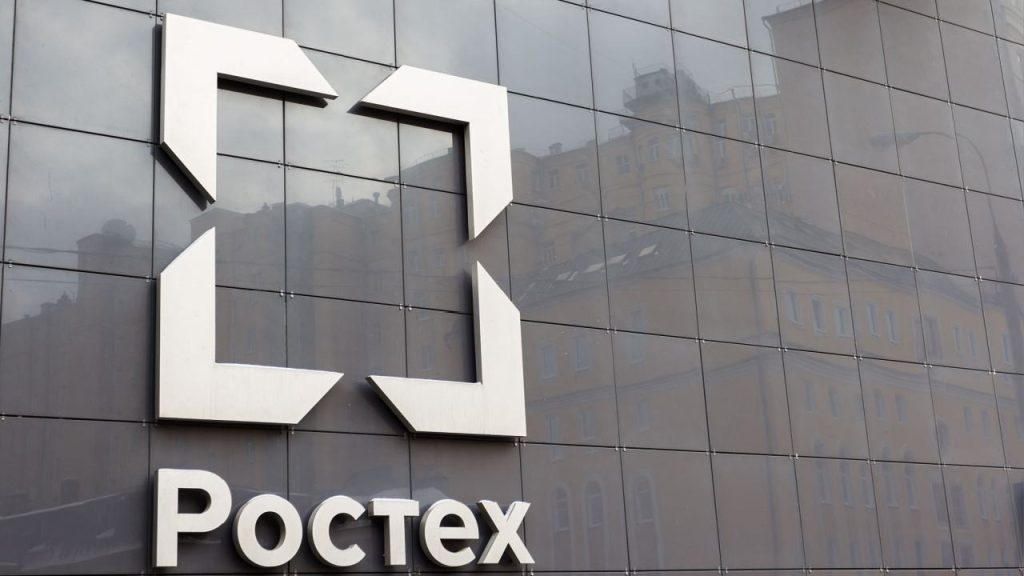
In the rapidly evolving landscape of global finance, Russia is making strategic moves to fortify its economic resilience and reduce dependence on Western financial systems. The introduction of Rostec’s ruble-pegged stablecoin, RUBx, is a pivotal development in this endeavor. This initiative is not merely a technological advancement but a calculated response to the challenges posed by international sanctions and the need for financial sovereignty.
Rostec, a state-owned defense and technology conglomerate, has long been at the forefront of Russia’s technological and economic strategies. The launch of RUBx is a testament to Rostec’s commitment to innovation and its role in shaping Russia’s financial future. By pegging RUBx to the Russian ruble, Rostec aims to provide a stable and reliable digital asset that can facilitate secure and efficient transactions within Russia’s financial infrastructure. This move is particularly significant given the volatility of traditional cryptocurrencies and the need for a stable medium of exchange in the face of economic uncertainties.
The stability of RUBx is a key factor in its potential success. Stablecoins, by their nature, are designed to minimize price fluctuations by being pegged to a fiat currency. In this case, the Russian ruble provides a stable foundation for RUBx, making it an attractive option for both domestic and international transactions. The integration of RUBx with Russia’s existing banking network further enhances its utility, ensuring seamless transitions between traditional and digital financial systems. This integration is crucial for gaining the trust and adoption of both businesses and consumers, who may be wary of adopting new financial technologies.
Rostec’s ambitions for RUBx extend beyond the domestic market. The conglomerate is actively pursuing listings on major cryptocurrency exchanges, a move that could significantly enhance the liquidity and global reach of RUBx. However, this ambition is not without its challenges. The existing sanctions against Russia and the reluctance of major exchanges to engage with sanctioned entities pose significant hurdles. Despite these challenges, a successful listing on major exchanges could transform RUBx into a global tool for international trade and financial operations, symbolizing Russia’s ability to innovate and adapt in the face of adversity.
In addition to the RUBx stablecoin, Rostec is also spearheading the development of a blockchain-based system designed to serve as an alternative to SWIFT. Known as CELLS, this system aims to provide high-speed, secure, and irrevocable transactions, reducing reliance on the U.S. dollar and other Western-dominated currencies. The development of CELLS is part of a broader trend in Russia, where the creation of alternative financial infrastructure is seen as crucial for maintaining economic sovereignty. By leveraging blockchain technology, Rostec seeks to create a system that is resistant to external interference and capable of supporting Russia’s international trade relationships.
The emergence of stablecoins like A7A5, pegged to the Russian ruble, has raised concerns about their potential use in facilitating shadow payments and circumventing international sanctions. Reports indicate that A7A5 has facilitated approximately $9 billion in transactions, with a significant portion flowing through Grinex, a cryptocurrency exchange. These developments have drawn the attention of the U.S. Department of the Treasury, which has targeted Russian virtual currency exchanges and cybercrime facilitators in coordinated international efforts. The use of cryptocurrencies in the oil trade further highlights the challenges of enforcing sanctions in a decentralized and borderless digital environment.
While Rostec’s initiatives are presented as legitimate efforts to modernize Russia’s financial system, the potential for these technologies to be used for illicit purposes cannot be ignored. The international community will be closely watching to ensure that these technologies are not used to undermine global security and stability. The future of Russia’s financial system may well depend on its ability to strike a balance between innovation and regulation, transparency and security, and economic independence and international cooperation.
In conclusion, Rostec’s launch of the RUBx stablecoin and its development of a blockchain-based alternative to SWIFT represent a bold and ambitious attempt to navigate the complexities of the modern financial landscape. These initiatives are a response to the challenges posed by international sanctions and the need for financial sovereignty. While they raise concerns about the potential for sanctions evasion and illicit activities, they also highlight Russia’s commitment to innovation and its ability to adapt in the face of adversity. The future of Russia’s financial system will depend on its ability to strike a balance between these competing priorities, ensuring that its financial technologies are used for legitimate purposes and contribute to global economic stability.





